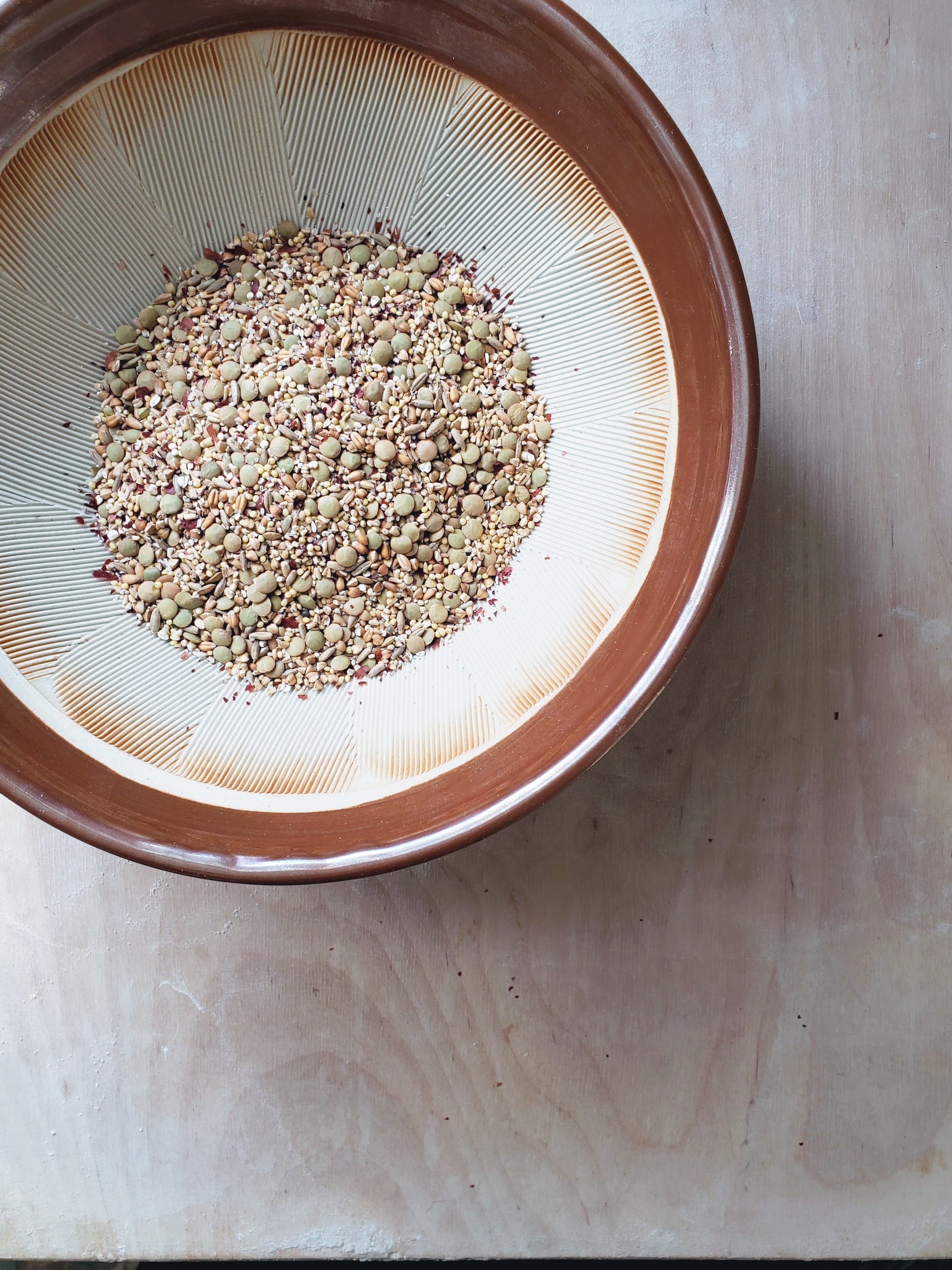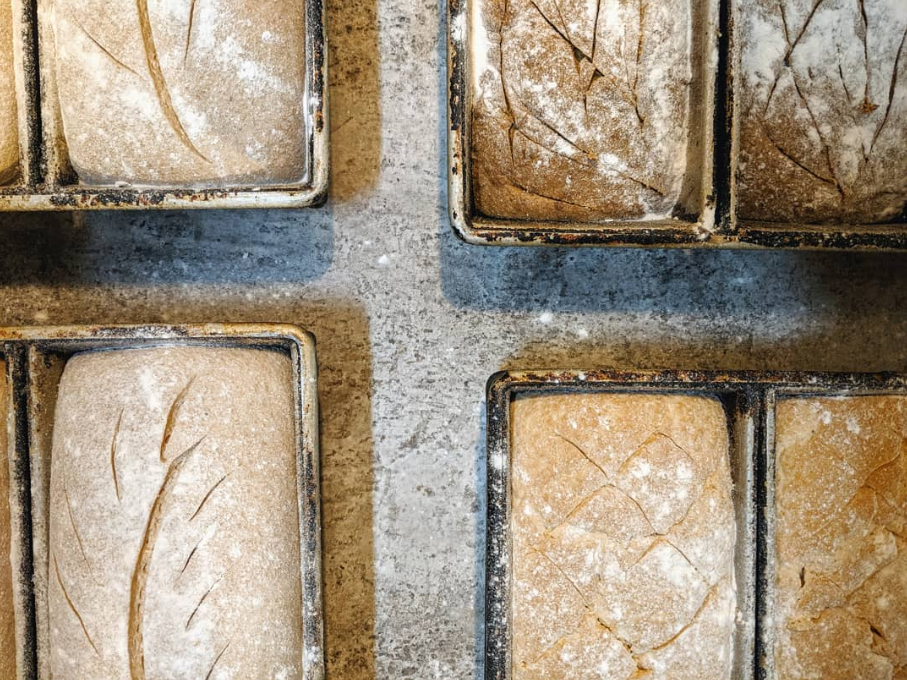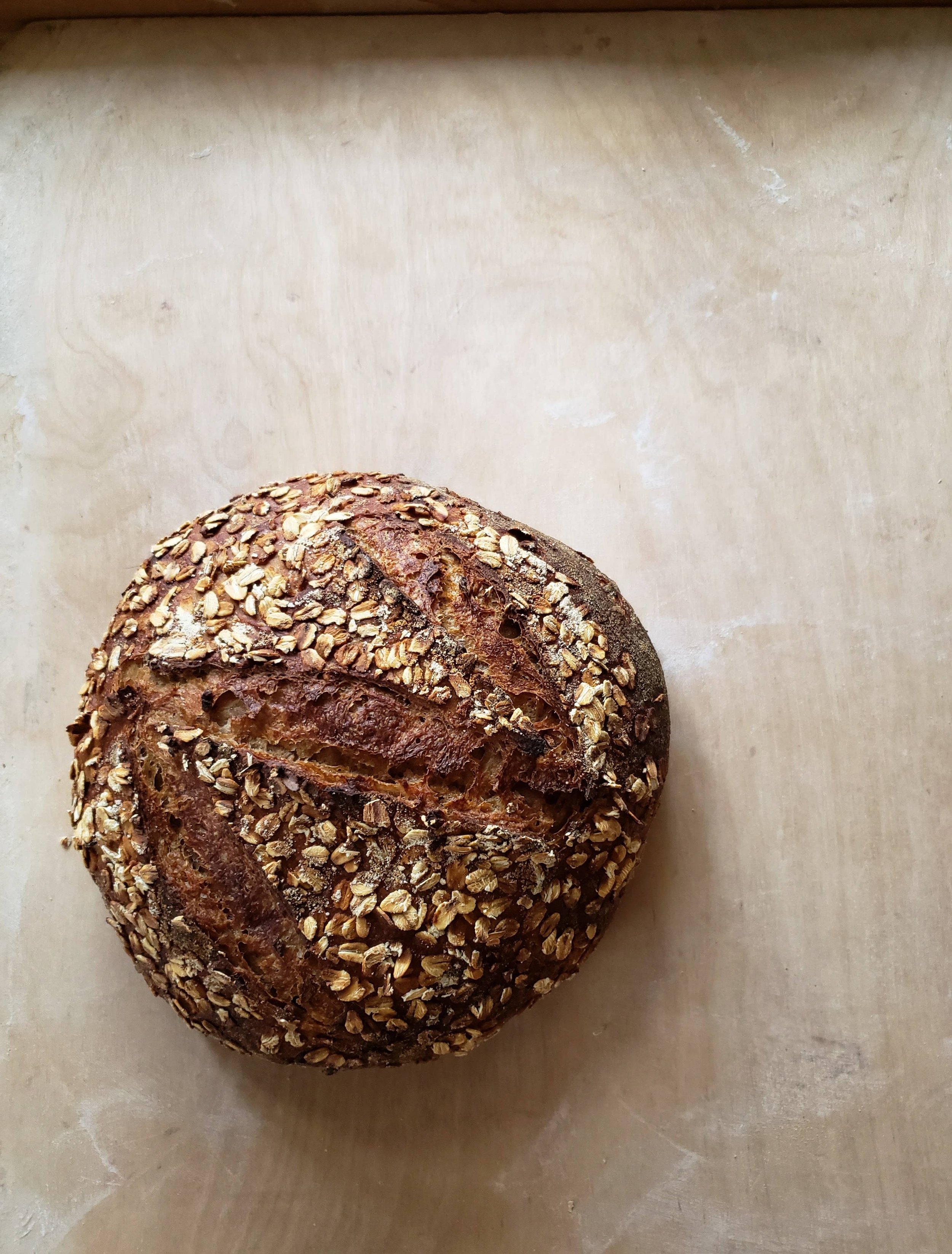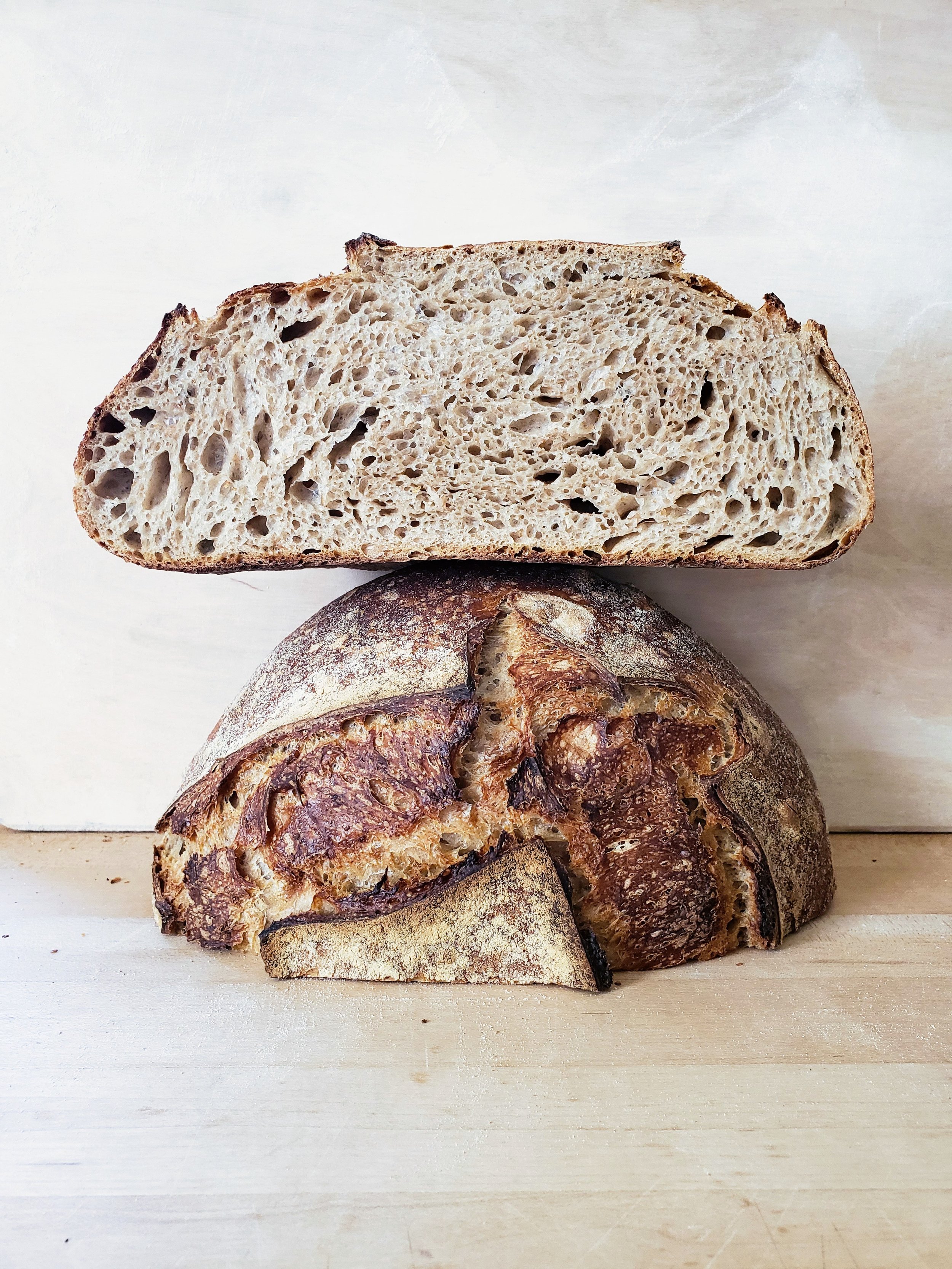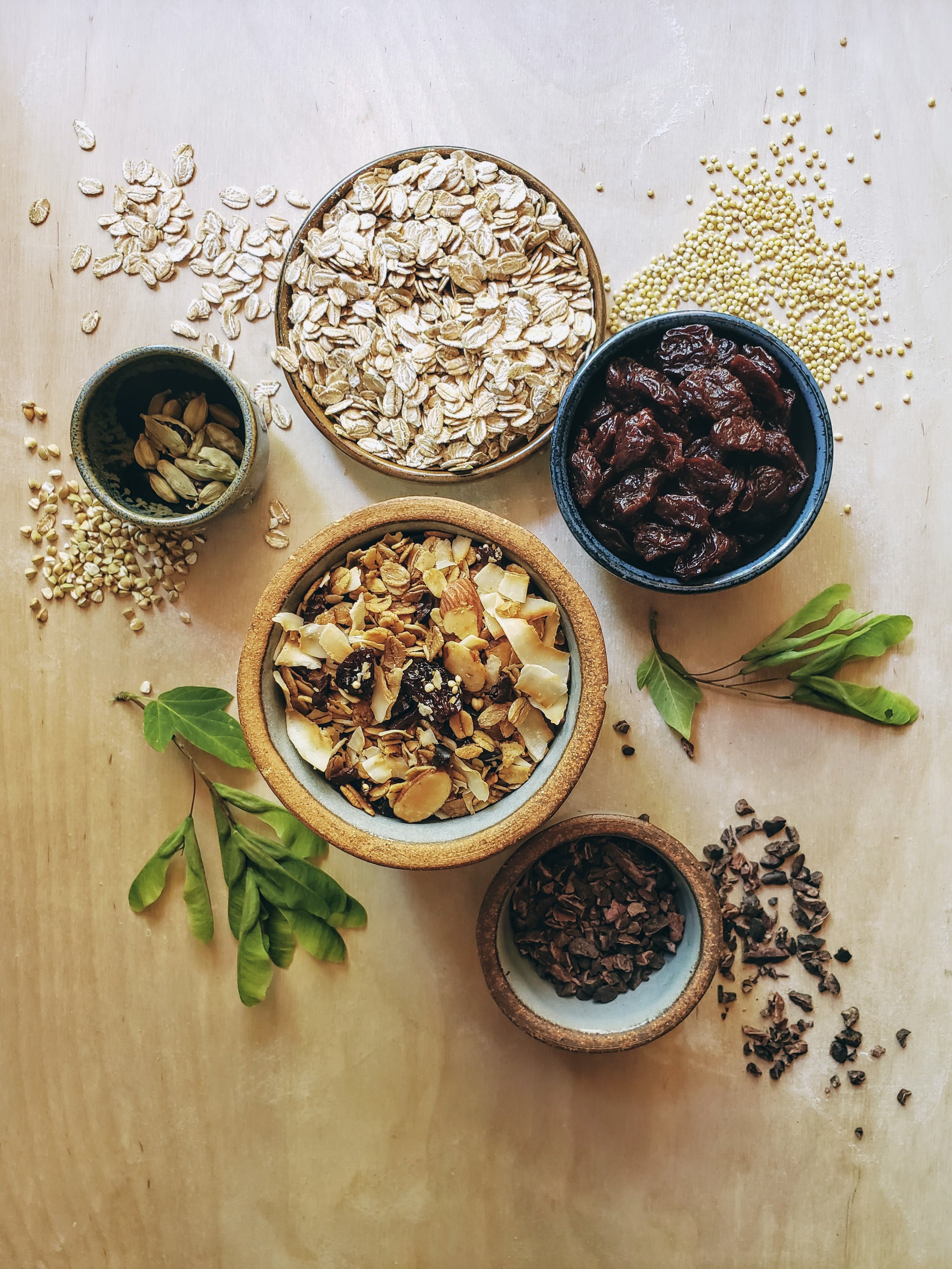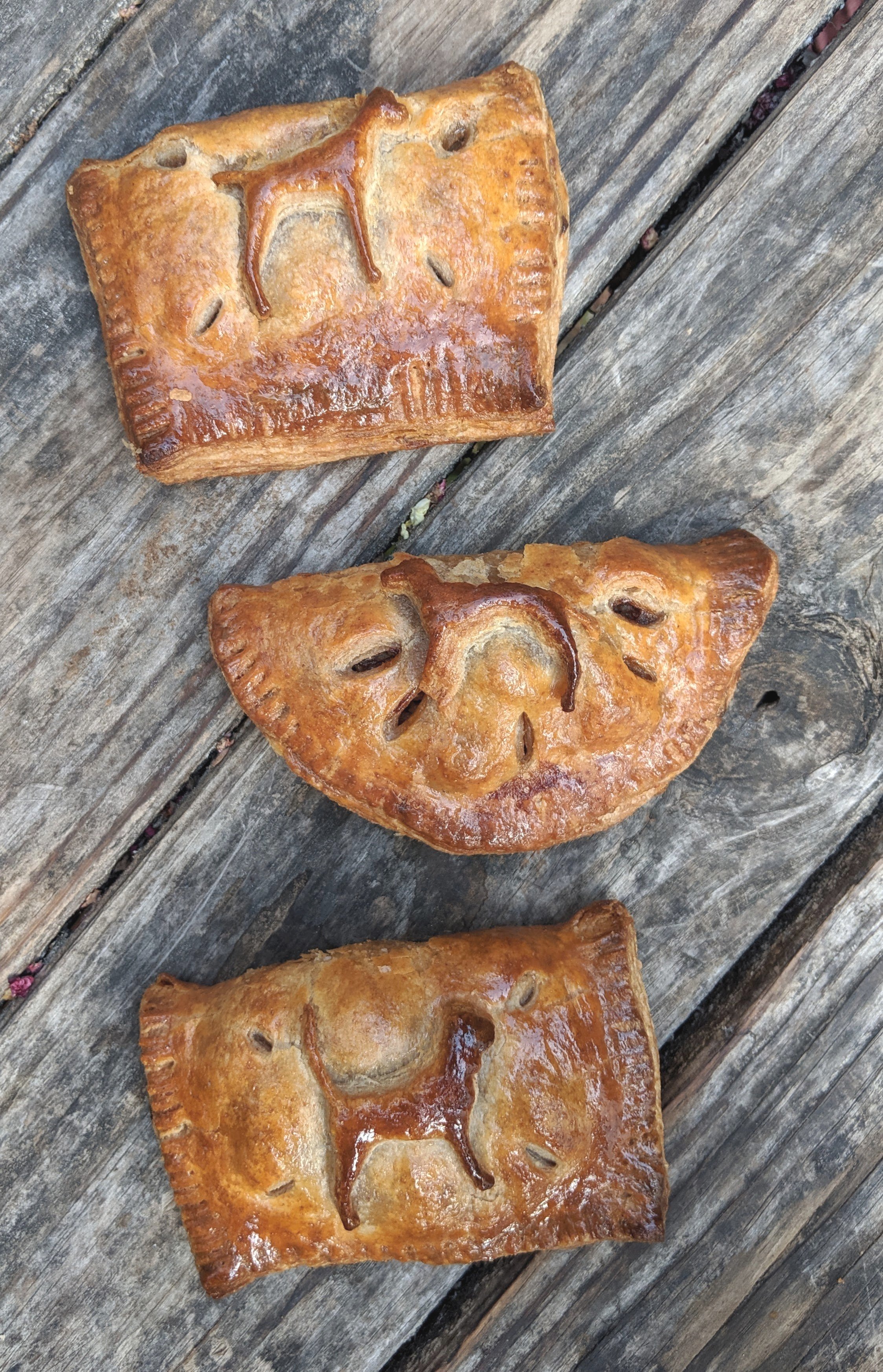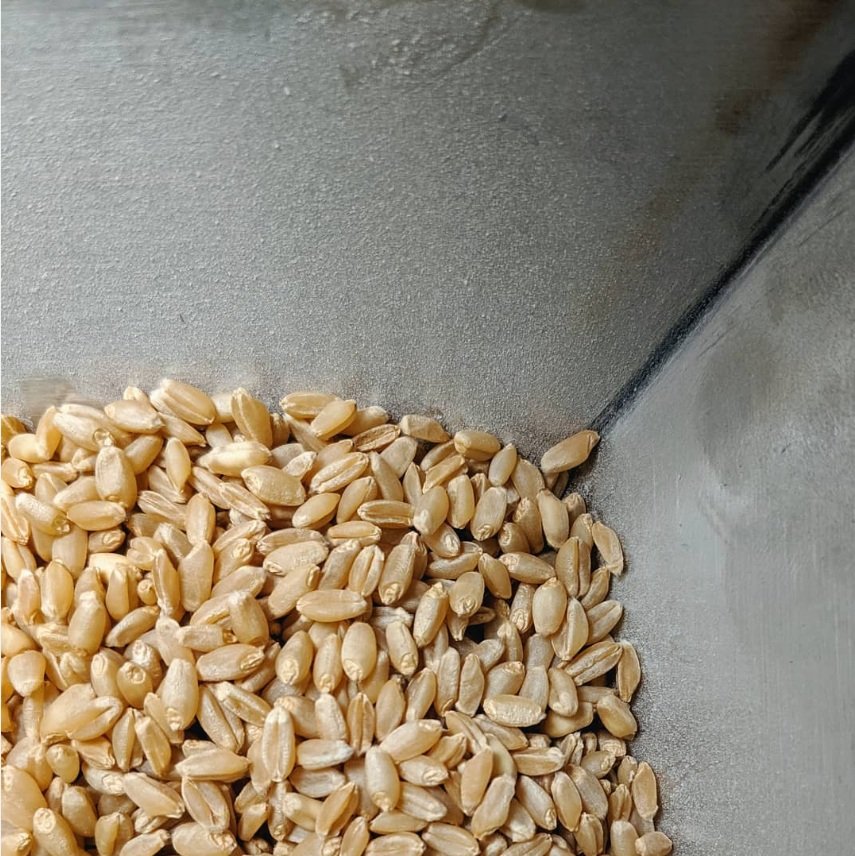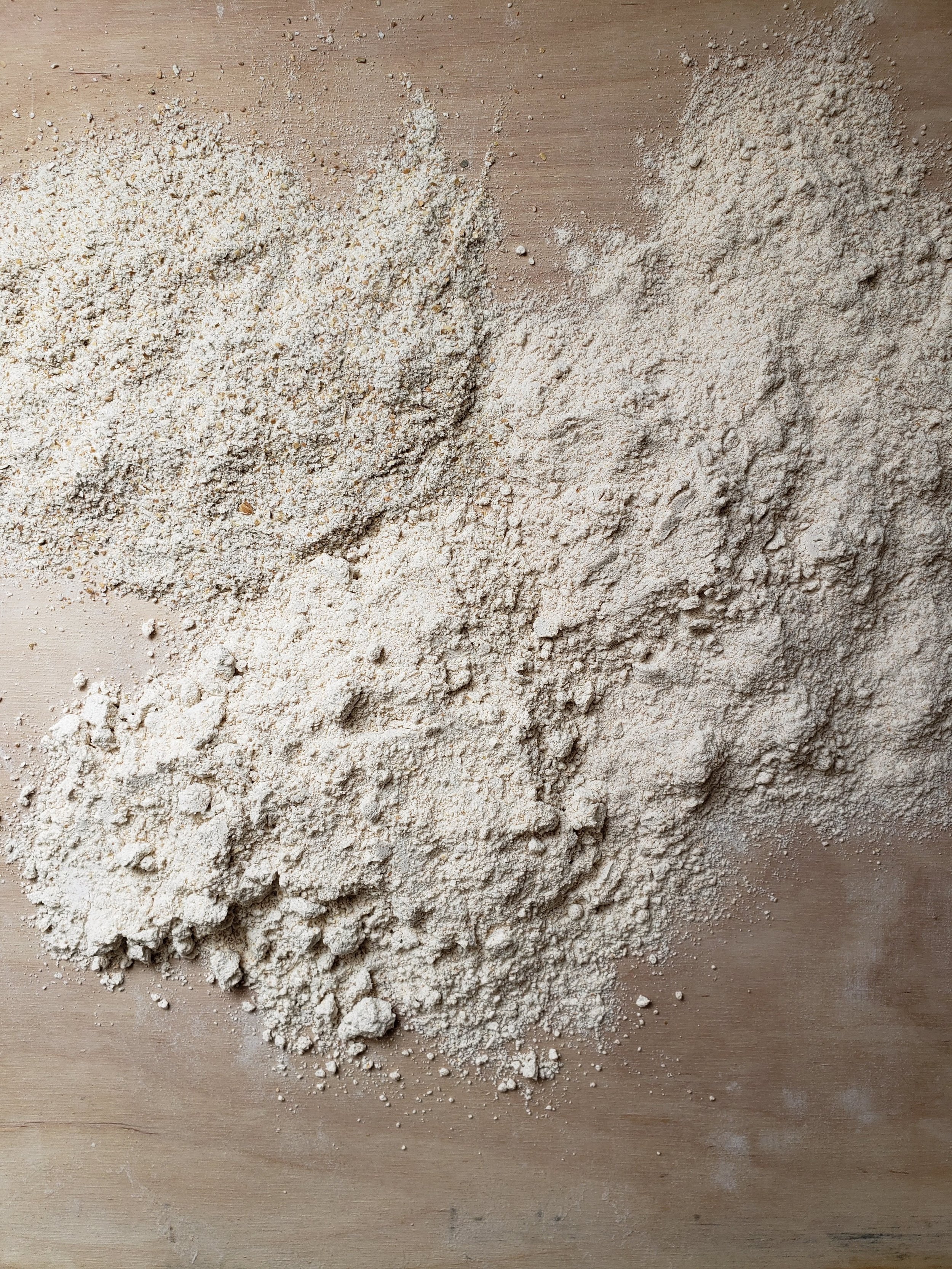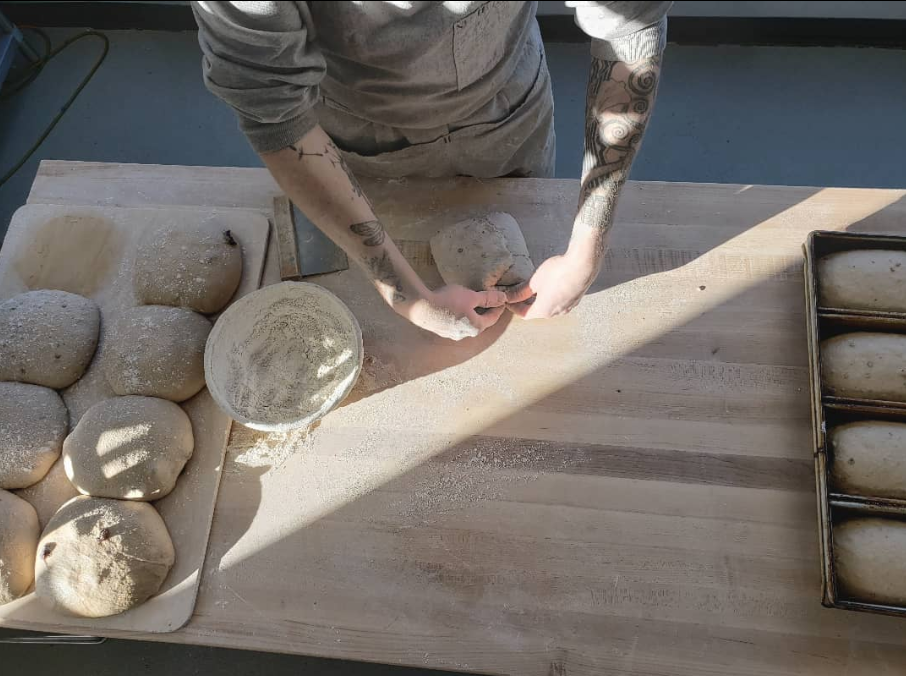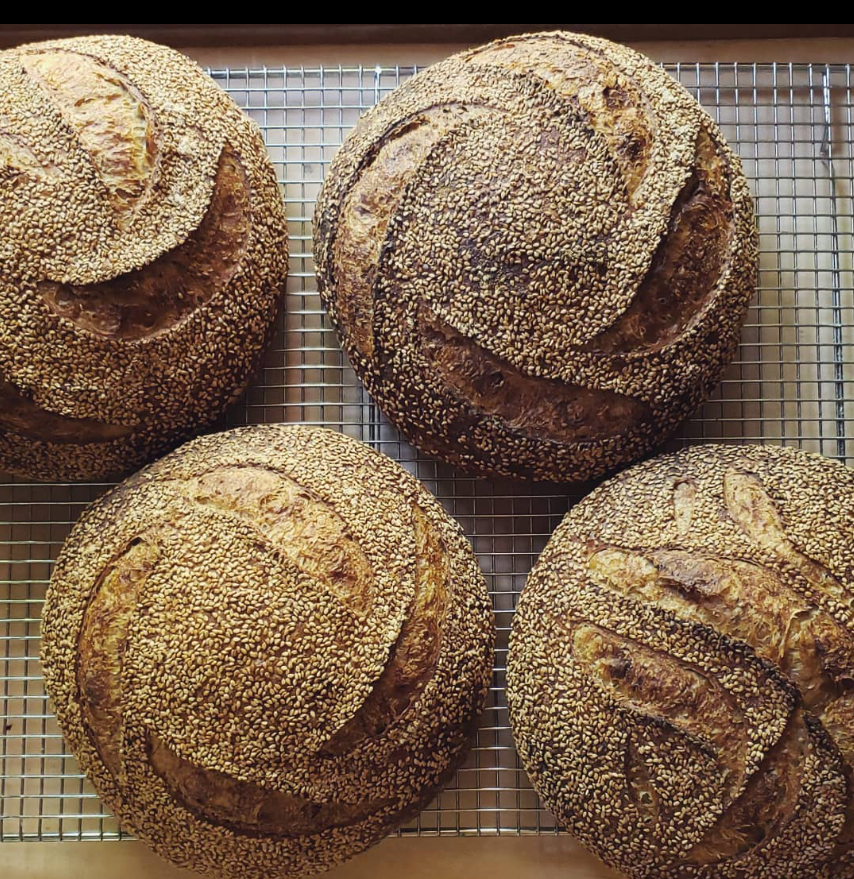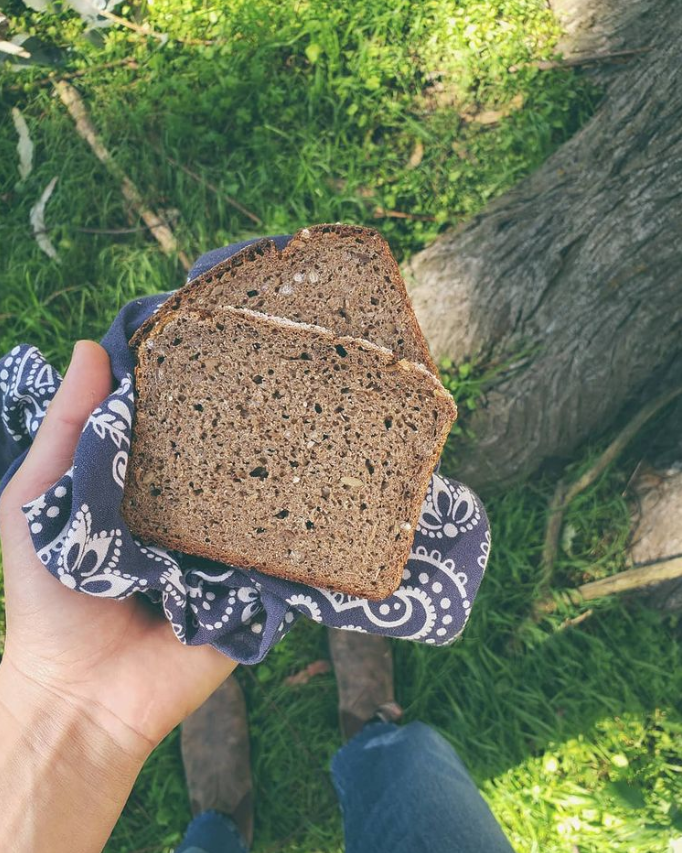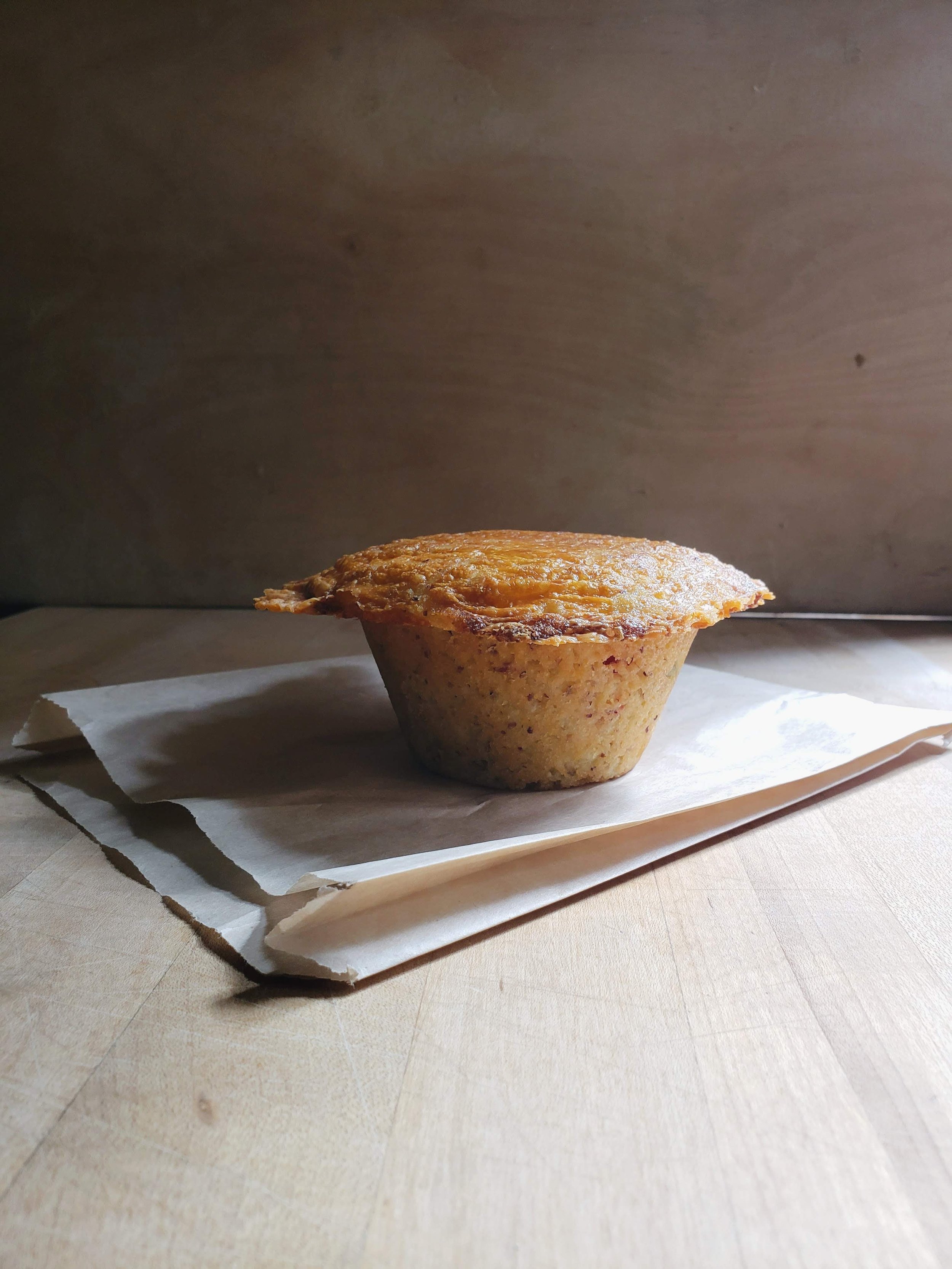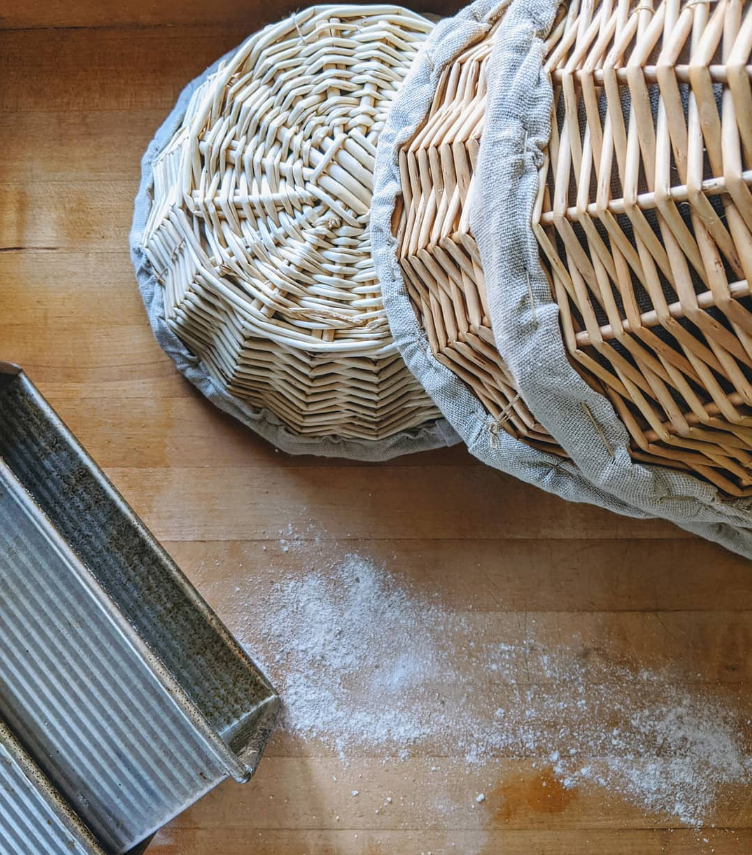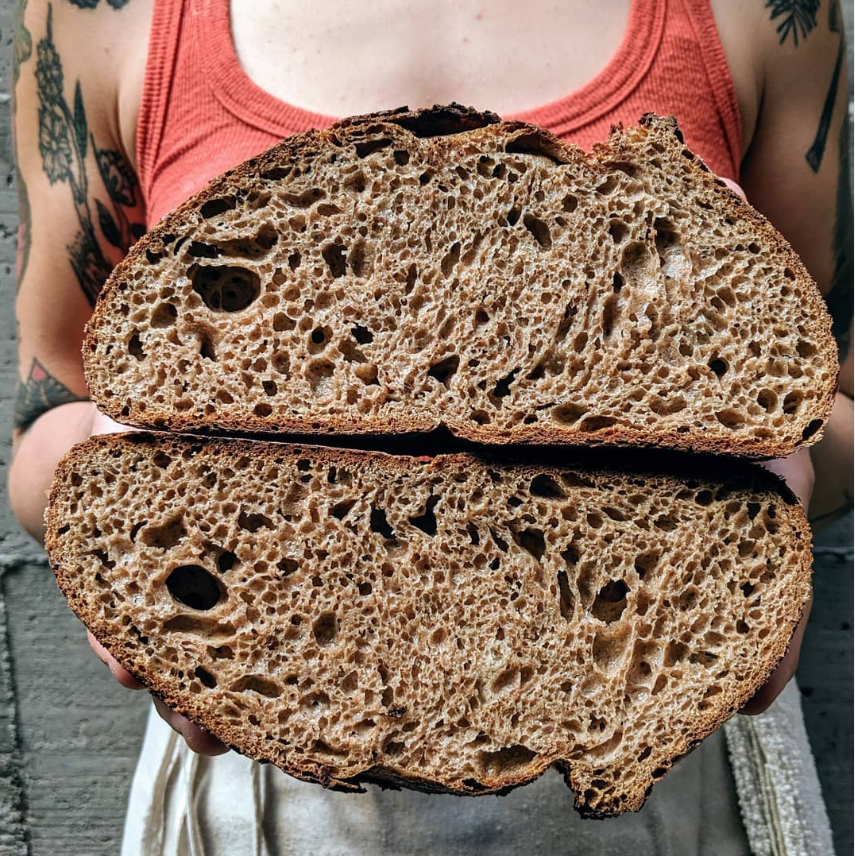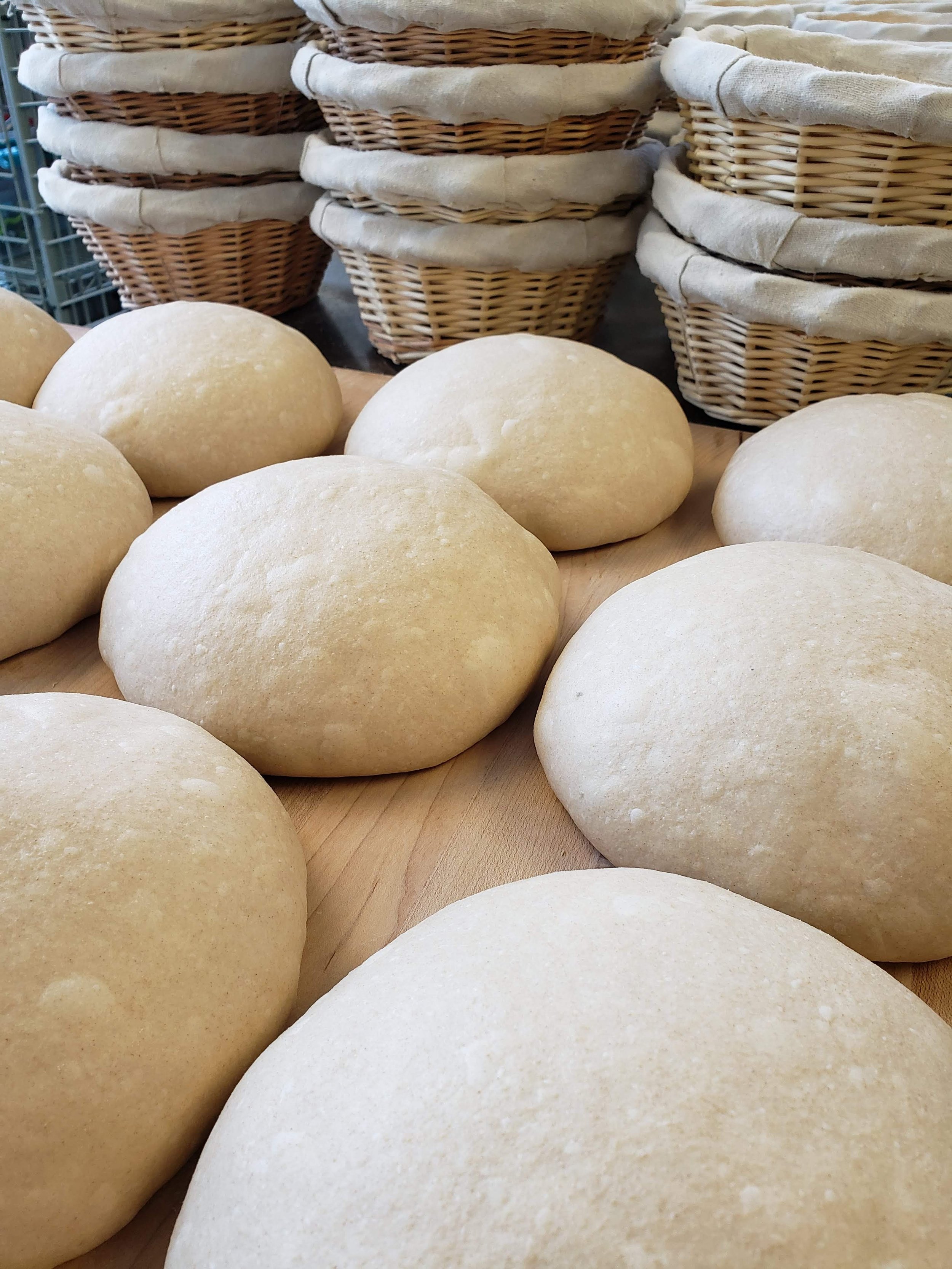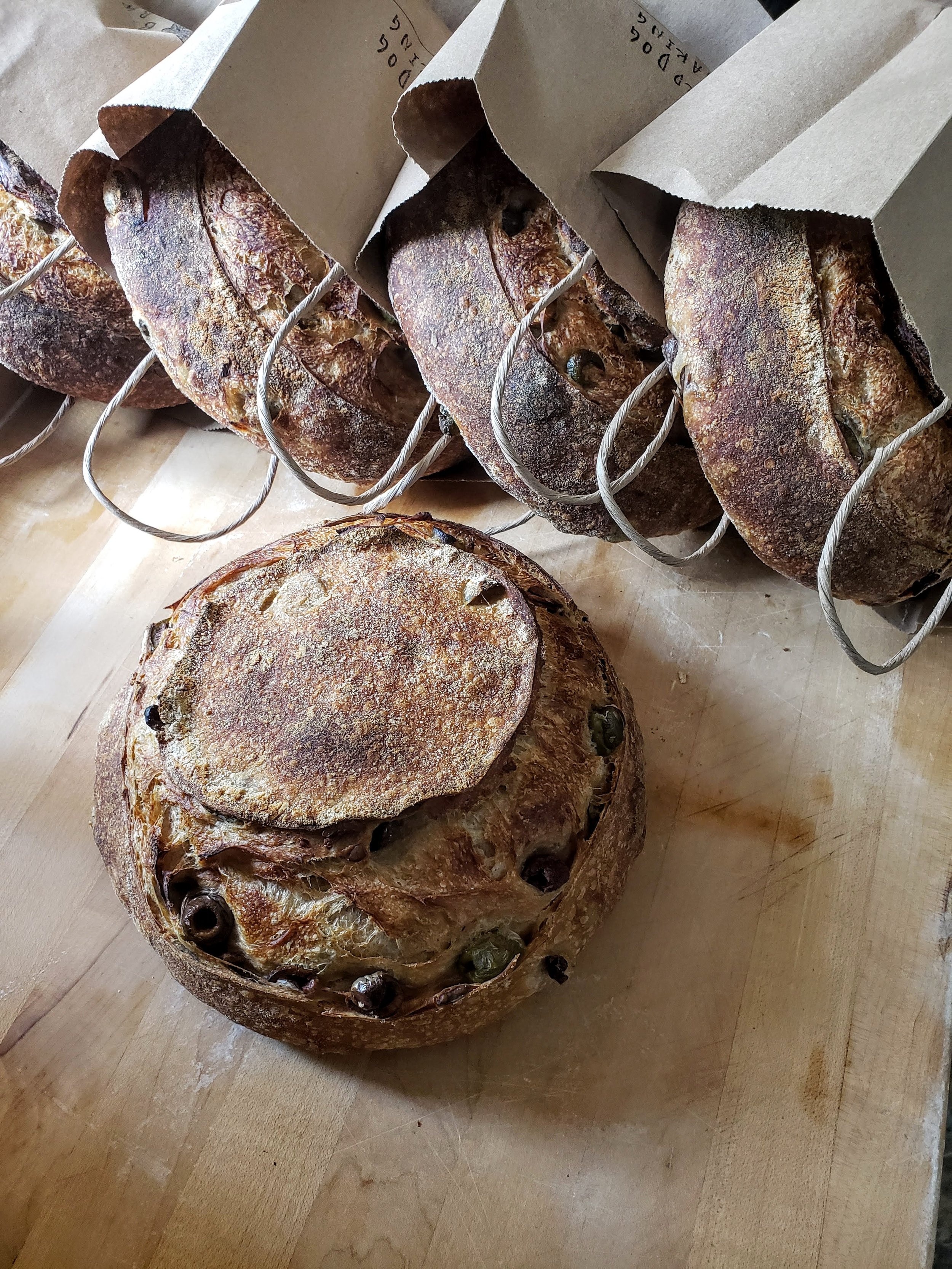additional info
Warthog wheatfield, Janie’s Farm - Cecelia Gunther
“The health of soil, the health of plants, the health of animals, and the health of people should all be studied as one great subject.” - Sir Albert Howard
“What would it be like to speak to the natural world as a member of the democracy of species? To raise a pledge of inter-dependence?” - Robin Wall Kimmerer
WHY LOCAL, Diversified, REGENERATIVE FARMS?
Your food dollars are hard at work protecting the land around you, and everything downstream.
At Bird Dog, we believe that health comes from the soil up. We know that farms with a thriving, diverse ecosystem - both within the soil and above - grow the most nutritious and most delicious foods. Through our craft of baking, we are able to directly support farmers that build healthy soil, enabling us to play an active role in healing our environment. We are committed to supporting farms whose practices ensure the vitality, safety, and beauty of our fields and waterways for many generations to come.
We strive to source from local growers as much as possible and we strongly believe in honoring our farmers for their hard work by paying fair prices for their crops. 100% of our flour is grown organically in the Great Lakes region. Our bread and pastries are made with beautiful produce grown by farmers in our area. We thoughtfully source all of our eggs and dairy from local companies who have outstanding animal welfare practices. We are passionate about strengthening our local food system and we are passionate about strengthening our local communities. We can meet both goals by sourcing incredibly nutritious foods from farms right here in our region. We count ourselves very lucky to be able to work closely with such amazing growers and in turn keep our food dollars close to home.
why diverse grains?
At Bird Dog, we feel it is our job and privilege to support our farmers throughout the entire growing season. Utilizing a diverse variety of grains in our bakery ensures that our farmers have a market for the crops that give nutrients back to the soils.
Using crop rotations and cover crops means our farmers can plant a diverse network of plants that will in turn support and promote a thriving ecosystem. Each crop has a special job in regenerating soil health and we work hard to support the farms who have soil management at the top of their list.
Baking with diverse grains allows us to make some exciting breads and pastries. We are able to offer unique flavor profiles that stay true to each grain’s specific character while also allowing us to harness the health benefits each grain has to offer, providing you with a broad range of key nutrients! The more we learn about gut health the more apparent it becomes that it’s not only about consuming prebiotics in the form of fiber, but consuming a diverse mix of fiber which keeps us healthy.
Regional grain chain?
REGIONAL GRAIN vs COMMODITY GRAIN? Grain requires a lengthy journey from field to plate, with many hands and hearts involved along the way.
Grain, as a crop, involves many steps to get to our tables. Our grain processing infrastructure has shifted to a gigantic, global scale since industrialization came into play in the early 1900’s. This makes it challenging for local, smaller scale farmers to get their grain to you. Most of the flour available is part of the commodity chain, which favors quantity over quality, sacrifices the nutritional content of the grain, and uses farming practices that strip the land and harm the environment - all while paying farmers as little as possible.
When you purchase products using regional grain, you are directly supporting farmers in your area and the many workers they employ, all while strengthening your rural economies. You control who you choose to support when you buy direct from farmers. You can then support the farmers who have great passion in stewarding the land, in caring for the full ecosystems around them as well as the nutrient density of the foods they grow, all while mitigating climate change. And you support your local millers, markets, and bakers all with one delicious loaf of bread.
Check out this super-awesome INFO-GRAPHIC the amazing people at Artisan Grain Collaboration made with designer Amy Sparks! Learn about the multitude of people and businesses you support when you buy local, regional grains.
WHY STONE GROUND?
Stone milling allows us to preserve the entire grain and all of its nutrients. Whatever goes into the hopper comes out as flour in its whole, natural glory. You get all the vitamins, minerals, oils, fiber, and carbohydrates - in essence, all of the flavor and nutrients.
From there, you can choose to sift the flour into styles that suit different baking needs, but stone-milled flour will always retain a large portion of the bran and germ due to the way the whole berry is ground all at once. We love baking with a variety of flours, and you can be sure that everything we make is packed with whole-grains.
Stone milling is very different from commercial roller mills which use huge steel drums to crush and flake away the bran and germ portions of the wheat. Roller milling results in a more shelf-stable flour (which big companies love) but it sacrifices all the good stuff within the grain that we need to nourish ourselves. After sifting, what you are left with is essentially just starch - which is very difficult for your system to process. Even store bought "whole-wheat flour" can be misleading. The requirements vary, but mostly companies take the sifted white flour (i.e. starch) and blend in whatever quantity of fiber they like. It only has to have some whole grains included to be labeled whole-grain flour.
Stone milling is the key for wholesome, nature-intended, outrageously flavorful and extremely nourishing flour. And we are ever thankful to be able to work with passionate farmers in our region and the immensely talented millers they have working hard to bring us the best flour out there! Be sure to hug your local miller next time you see them, they really are the unsung heroes!
GLUTEN INTOLERANCE?
A growing number of people find that as much as they love bread and pasta, it doesn’t seem to love them back. These foods are becoming difficult for their digestive systems to process. Gluten intolerance is real and it can become quite a painful problem.
There seems to be a few reasons why we are seeing this intolerance more and more in the modern age. Most notably, people are not eating whole grains as much anymore. Typical grocery store loaves contain mostly white flour (over-processed starch, essentially) and there’s no question that it’s hard on your system. Other studies point to the cocktail of harmful chemicals used to grow, store, and process/condition the commodity flour found in supermarket breads.
Refined flour, stripped of its germ and bran can lead to compromised gut health, and in turn inflammation which presents to many as “gluten-sensitivity”. However, when eaten in its whole grain form, wheat can actually promote gut health. “We often think of dietary fiber as something to eat to keep us regular, but new research deepens the understanding that fiber is an essential prebiotic—food for the gut microbiota that fuels their own survival and keeps the intestinal walls healthy”. https://lifeandthyme.com/food/is-wheat-really-to-blame/
“A lot of gluten intolerance is lack of fermentation as well as lack of fiber. If you want to eat bread and you’re not celiac, eat whole grain, eat organic, and eat a long fermentation.” -Dr. Stephan Jones, Breadlab
Another reason we are seeing more gluten sensitivity in our modern diet is due to how the process of making bread has changed. For as long as we have had leavened bread (6,000+ years now!) it has been made with flour that has undergone a fermentation process. Natural fermentation was the only way to create airy bread pre-industrialization. In the 1920’s bakeries started shifting to a new way of making bread, one entirely reliant on heavy machinery that whipped the flour at high speeds to essentially froth in the bubbles created by commercially produced yeast (side note - have you ever noticed how light a loaf of commercial bread is? That’s because you are being charged for air.). Here’s the catch - this bread only rests 1 hour before being baked. This method cuts short the entire fermentation process leading to bread that is much more challenging for your system to break down.
Now let’s talk SOURDOUGH.
The wonderful, magical thing about baking with sourdough is that during the fermentation process, all those natural little microbes will start to break down the flour for you. Natural yeast, friendly bacteria, and enzymes found in the flour begin to process the complex starches in the grain. They help break down the larger proteins (like gluten) into smaller amino acids and they also remove phytic acid and fructan - compounds that can be hard to digest and can inhibit mineral uptake within your digestive system. This unlocking of nutrients means more of them are readily available to you. The bread becomes healthier while also becoming easier for you to digest.
All of our breads at Bird Dog start with 100% organic flour and are fermented with natural sourdough cultures for a minimum of 22 hours (around 40 hours if you count the pre-ferment). We take it nice and slow and allow our dough to ferment fully to ensure our breads are the most nutritious and flavorful they can be.
If you are finding it hard to tolerate wheat breads, please reach out to us. We are passionate about baking with a diverse array of grains, many of which have been shown to be much easier to digest due to their minimal and/or unique gluten structures.
Magical einkorn -
Einkorn is the most primitive and ancient form of wheat, the first wheat we humans began eating and evolving alongside tens of thousands of years ago. Early humans were collecting the wild seeds 30,000 years ago in the Fertile Crescent and we began cultivating the grain around 12,000 years ago with traces found at the site of Gobekli Tepe.
Einkorn is a landrace wheat, which means it has (and continues to) evolve naturally within it’s regional setting, making each grain diverse and genetically dynamic - as opposed to being bred for a small window of identical traits. This means the species is more resilient which is super important for withstanding environmental hardships out in the field. Landrace wheats have stronger, deeper roots that can tap far into the soil and bring up nutrients and water that are unavailable to many of the modern wheat's shorter root systems. They also have 5x the leaf surface which means they are masters of photosynthesis (carbon sequestration, you say?) All this combined with their slower pace of seed ripening make for an extremely flavorful grain and resulting flour.
Einkorn contains more nutrients, vitamins, minerals, anti-oxidants, and protein than modern wheat varieties and the smaller amount of starch it contains is more compact than modern wheats. This means it is released much slower, avoiding the spike in blood sugar that comes with foods high in processed starch. Einkorn does contain gluten but it is genetically different from modern wheat’s gluten makeup (the main difference being that it does not contain the D-genome which was cross bred into later varieties of wheat and is typically associated with gluten intolerance). https://www.einkorn.com/3-reasons-einkorn-may-be-easier-to-digest-than-other-types-of-wheat/
Einkorn is, however, a more labor intensive wheat. Compared with modern wheat, einkorn takes a little longer to ripen, its taller stalks can lodge (when the top of the wheat stalks fall over), and harvesting can be tricky in a world where equipment is designed for modern wheat varieties. Einkorn’s yield is typically lower than the wheat we know today that has been bred to produce an incredible amount of grain. Given these factors, it tends to be a bit more expensive to grow and purchase. But the multitude of benefits are reason enough to give einkorn a try, especially if you find typical wheat hard on your system. And of course our bread is always naturally and slowly fermented, always organic, and always stone milled.
Einkorn produces a loaf that is more dense than your average loaf of bread. A little slice goes a long way and you’ll be full for hours (amazing bang-to-buck ratio!). We recommend keeping it an an almost airtight container, or pre-slicing and freezing it in portions for easy thawing.
HOW TO STORE YOUR BREAD
You’ll find that because our breads are fully hydrated they last and last. Additionally, compounds created through sourdough fermentation act as natural preservatives without the need for added chemicals you find in typical store bought breads. We recommend keeping your bread cut side down on the counter. When we find the crust getting a little too tough, we like to move it to a container with a loose fitting lid or loosely cover it with a grocery bag. This will let a little of the moisture escape and keep it from getting soggy, but the crust will soften right back up. For freezing, we recommend pre-slicing and freezing in portions for easy thawing. (This seems crazy, but the refrigerator is actually the worst place you can keep bread - that specific temperature range speeds up the staling process.) Here’s a little post we did about it with some photos - instagram/breadstorage


